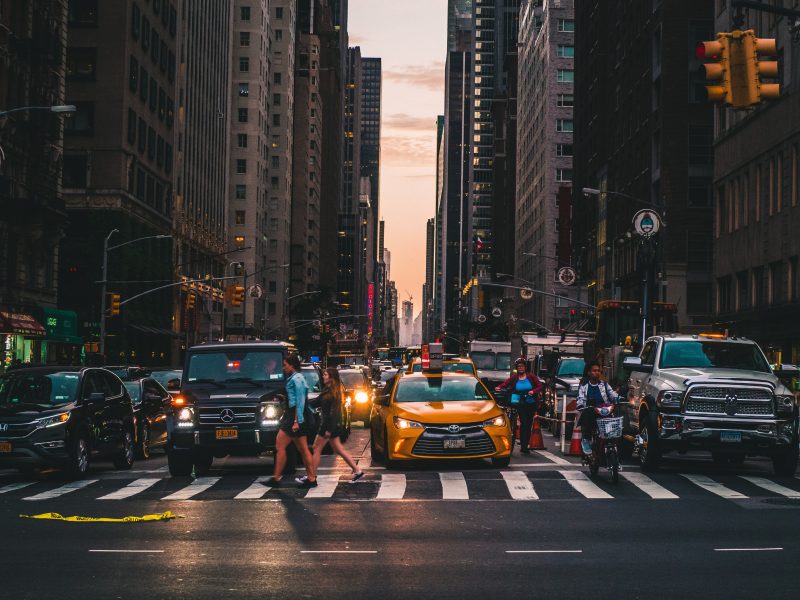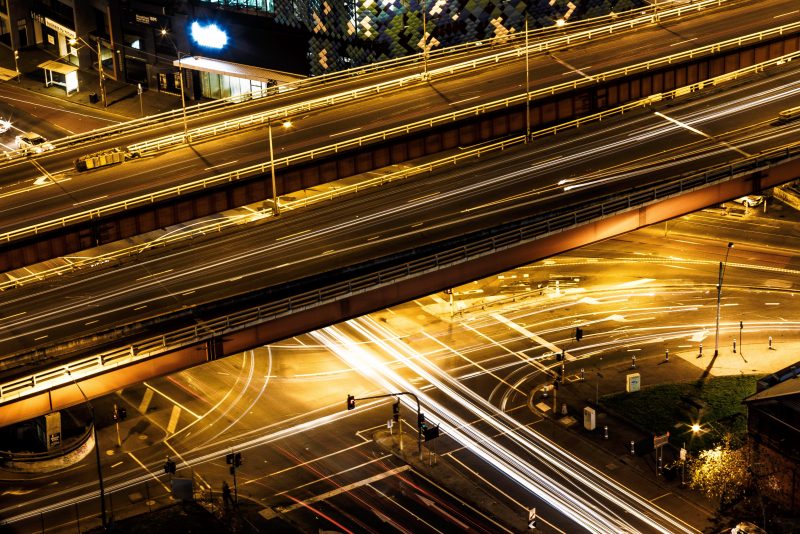Why US cities are putting the brakes on drivers

What happens when a car-centric city is bustling with new development — but parking is so much of a nightmare that people don’t want to drive into the city center?
This question is increasingly challenging city planners and real estate developers across North America, where many cities have long been designed to accommodate a car culture that’s showing its age.
Amid improvements in public transit infrastructure, technology developments and changing urban demographics, cities across the continent are making efforts to curb car dependency. Take Columbus, Ohio, for example, where parking headaches had become so chronic that office vacancies rose, despite continuing demand for sophisticated redevelopment. Downtown property owners, desperate for change, seized matters into their own hands to trial what’s been hailed as the largest of its kind transit subsidy program in the U.S.: the business association is offering a free bus pass to the more than 40,000 people who work in the area.
Meanwhile, Mexico City, the biggest city in North America, has recently made waves for its subtle, but far-reaching move to cut minimum parking space requirements. These laws, which are prevalent across the continent, had required housing developers to build a certain number of parking spaces depending on how many people lived there. Now, buildings can be designed according to the amount of parking that makes sense for the neighborhood, which in transit-heavy areas, may mean close to none.
“ Powerful new possibilities are emerging that together are poised to transform everything about the way we build cities.”
What’s happening in Columbus and Mexico City is part of a larger story. While frustration with congestion and pollution is inspiring a turn away from long-standing dependencies on cars, powerful new possibilities are emerging in the form of more supported transit, car-sharing and autonomous vehicles that together are poised to transform everything about the way we build cities, and move in and around them.
Changing demographics, and a strong case for changing cities
It’s not just cities and public-private partnerships driving change. Private companies have been actively helping employees beat congestion, offering transit subsidies as well as bike-to-work schemes, corporate car sharing programs and commuter buses. Even carpooling is making a comeback.
But perhaps the biggest fundamental driver toward fewer cars can be found in the way we choose to get to the places we live and work.
“We are seeing tremendous change in real estate and mobility preferences, especially with younger generations,” says Eric Enloe, Managing Director of JLL’s Valuation and Advisory Services platform. “In urban areas, it’s not a given that millennials will have or even want a car to get to work. Access to public transportation is one of the top considerations in new office searches. And with the rise of Uber and other services, Millennials in big cities often don’t feel like they have to drive anywhere.”
People want more ways to get to work than the old single-driver commute. Employers can also benefit from offering alternatives. For example, the Columbus initiative cited above is expected to spark new interest from employees who will appreciate the chance to get to work more easily, and in turn their employers. Ultimately, the initiative is projected to decrease the office vacancy rate from roughly 15 percent to around 4 percent.
“Encouraging more sustainable transportation options also fits the culture and mold of Fortune 500 companies,” says Enloe. “Many forward-looking organizations are investing in green buildings, so supporting public transit for employees, making it easy to access car-sharing or ride their bike to work—it all goes hand in hand with a commitment to corporate social responsibility.”
For building developers, cutting the square footage dedicated to parking spaces can produce bottom-line savings and exciting new possibilities. “By saving space and costs on parking, workplace designers can create amenities, potentially creating better experiences for employees,” says Enloe.

The road ahead: Obstacle and opportunity
Commuters may want to break out of gridlock, but change could take more time in some places than in others. Much of the delay can be traced back to how public dollars are managed. Right now, the U.S. government pours far more money into parking subsidies than in commuter transit benefits, with $7.3 billion a year going to tax breaks that help more people to drive to work, compared with $1.3 billion for commuter transit benefits.
Allocating more funds to transit could not only reduce traffic and carbon emissions—it could also improve and expand transit options so that more people can benefit.
But transit isn’t the only answer, warns Enloe. “Throwing money at one solution is not enough,” he says. “Cities, property owners and developers, and citizens alike need to take a look at what mix of transportation makes most sense in their community.”
Revolutionizing cars — and cities
Changing the way we think about the future of parking in cities is about more than public transportation and bike paths. Increasingly, the bigger picture view will have yet another opportunity to consider: the oncoming autonomous vehicle revolution.
“In much the same way that the automobile changed the cities of our country in the 20th century, it’s going to change our cities again,” says Paige Pitcher of the MIT Real Estate Innovation Lab. “And it’s going to disrupt everything we thought we knew about real estate.”
Indeed, the autonomous revolution will encourage designing buildings around people, not cars, she believes. “Cars don’t just take up room on roads, they also take up space in our homes and businesses,” says Pitcher. “We have four parking spaces for every car in the U.S. – that’s trillions of real estate dollars locked up as storage.”
Pitcher analyzed seven studies predicting the reduced demand for parking resulting from autonomous vehicles. Her research forecasts parking demand will decrease 34 percent by 2035. The ultimate result: cars no longer have to drive real estate.
The potential is huge, from parking garages that don’t need space for doors to open, to paved driveways being returned to grass. “It might sound futuristic, but the autonomous vehicle revolution isn’t about robots,” she says in a TedX Talk. “It’s about people and places and property value. Cities of the last century were designed around cars. So if cars change dramatically, then so will our cities.”
This article was first published on JLL Real Views.


